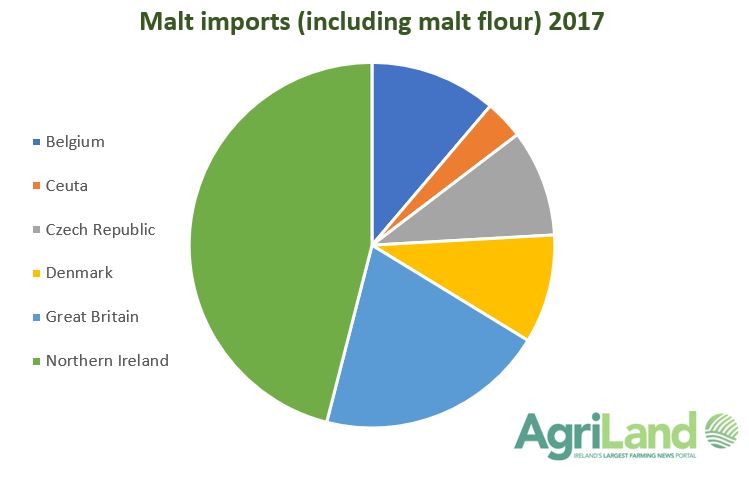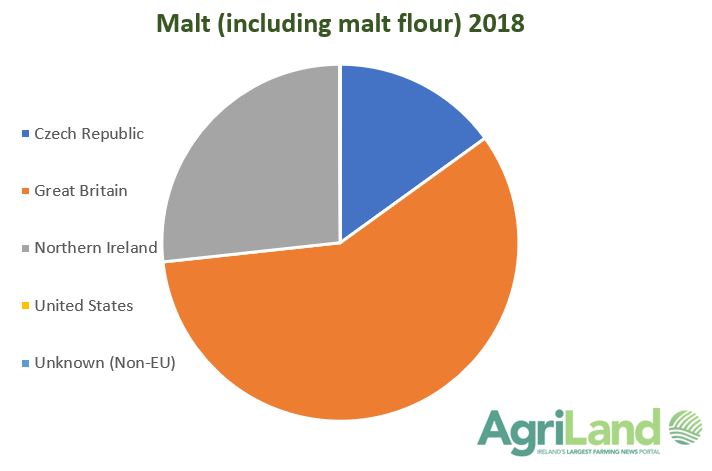28,088t of malt were imported into Ireland in 2018, according to the Central Statistics Office (CSO).
However, it should be noted that a significant proportion of malting barley (AgriLand estimates in the region of 100,000t) was imported in 2018. This barley would be included in barley (unmilled) imports.
Maize used in the distilling process is a small part of last year’s maize imports. However, it is also estimated to be close to 100,000t. This maize is included in the ‘maize (unmilled) not including seed’ category.
The category of malt for CSO purposes may include malt flour and malt itself may or may not be roasted.
Where did it come from?
When looking at the chart below many readers will be wondering where Ceuta is.
The state, which exported 1,465t of malt to Ireland in 2017, is located on the north coast of Africa. This product, most likely, originated from the continent of Africa, rather than from Ceuta itself.
 In 2018, Northern Ireland accounted for a much smaller percentage (1,552t or 15%) of imports. The majority came from Great Britain (7,032t or 68%). Insignificant amounts were imported from the US (8t) and some “unknown (non-EU)” countries (13t).
In 2018, Northern Ireland accounted for a much smaller percentage (1,552t or 15%) of imports. The majority came from Great Britain (7,032t or 68%). Insignificant amounts were imported from the US (8t) and some “unknown (non-EU)” countries (13t).
These amounts are insignificant on the pie chart, but it might be significant that the origin is “unknown (non-EU)”.

